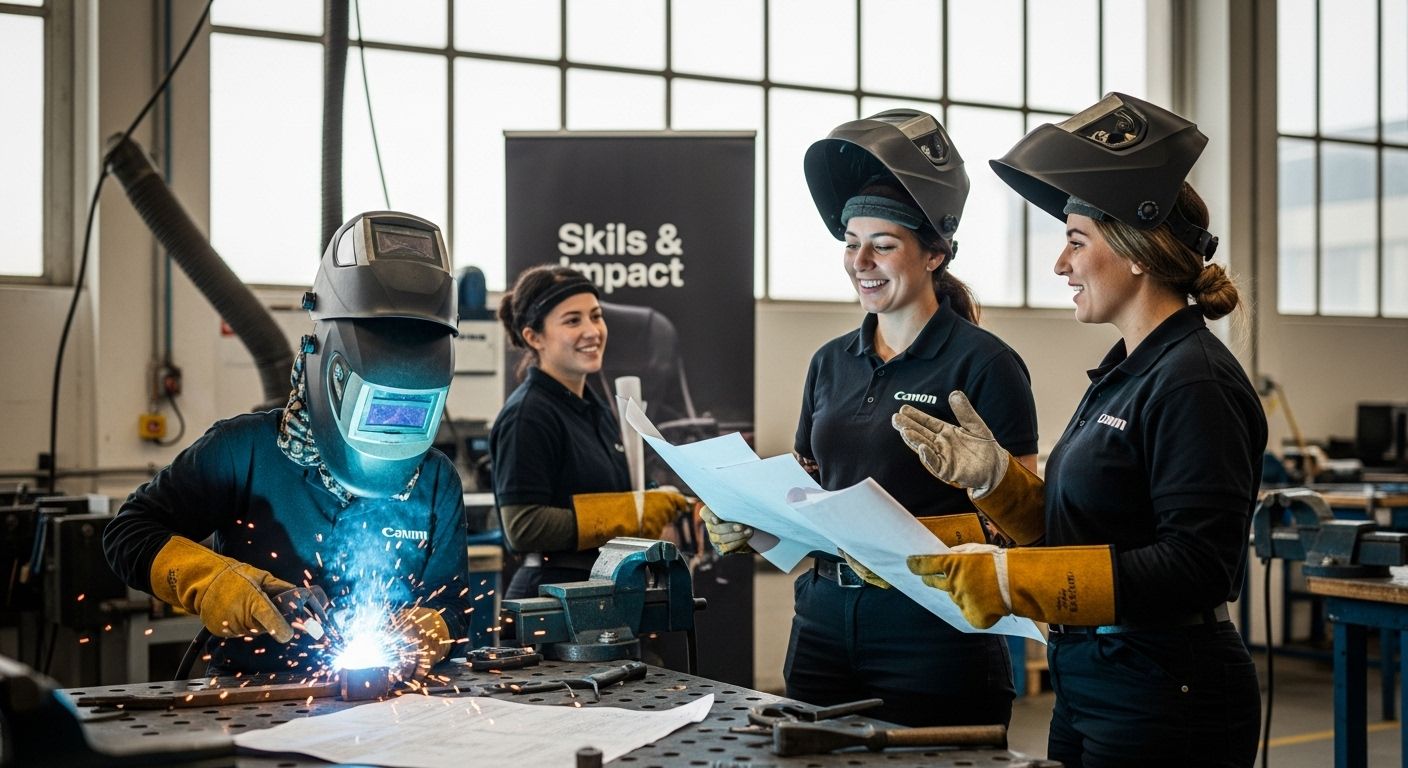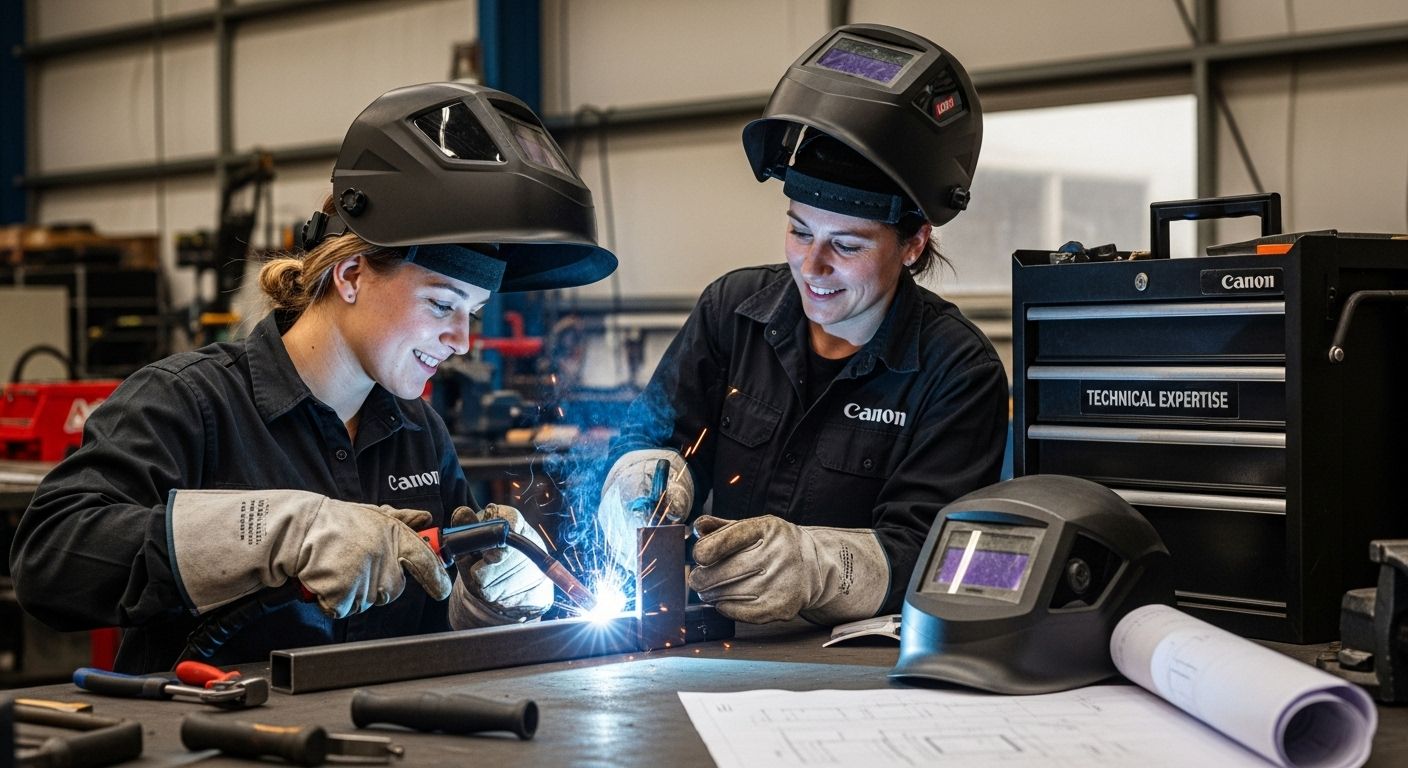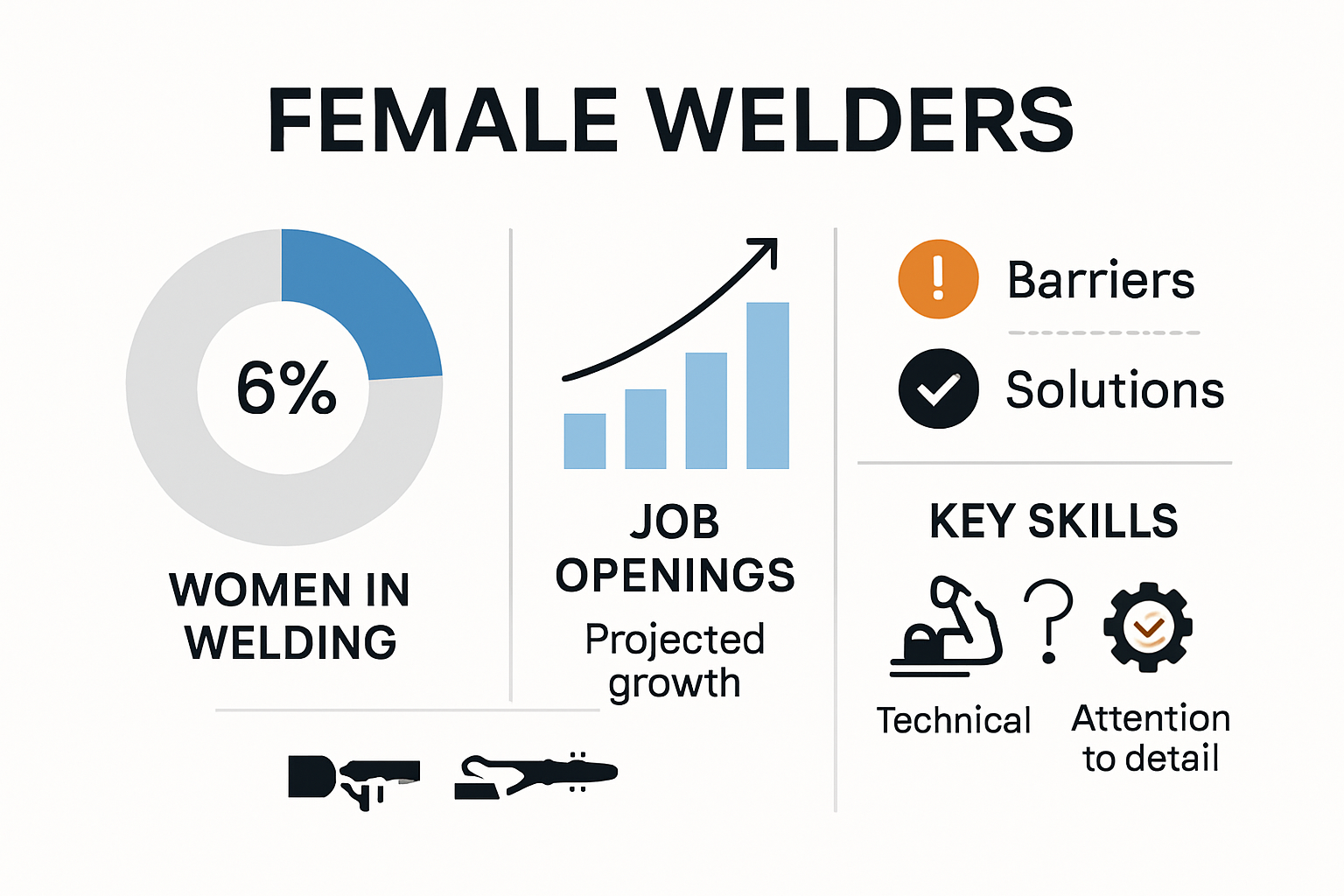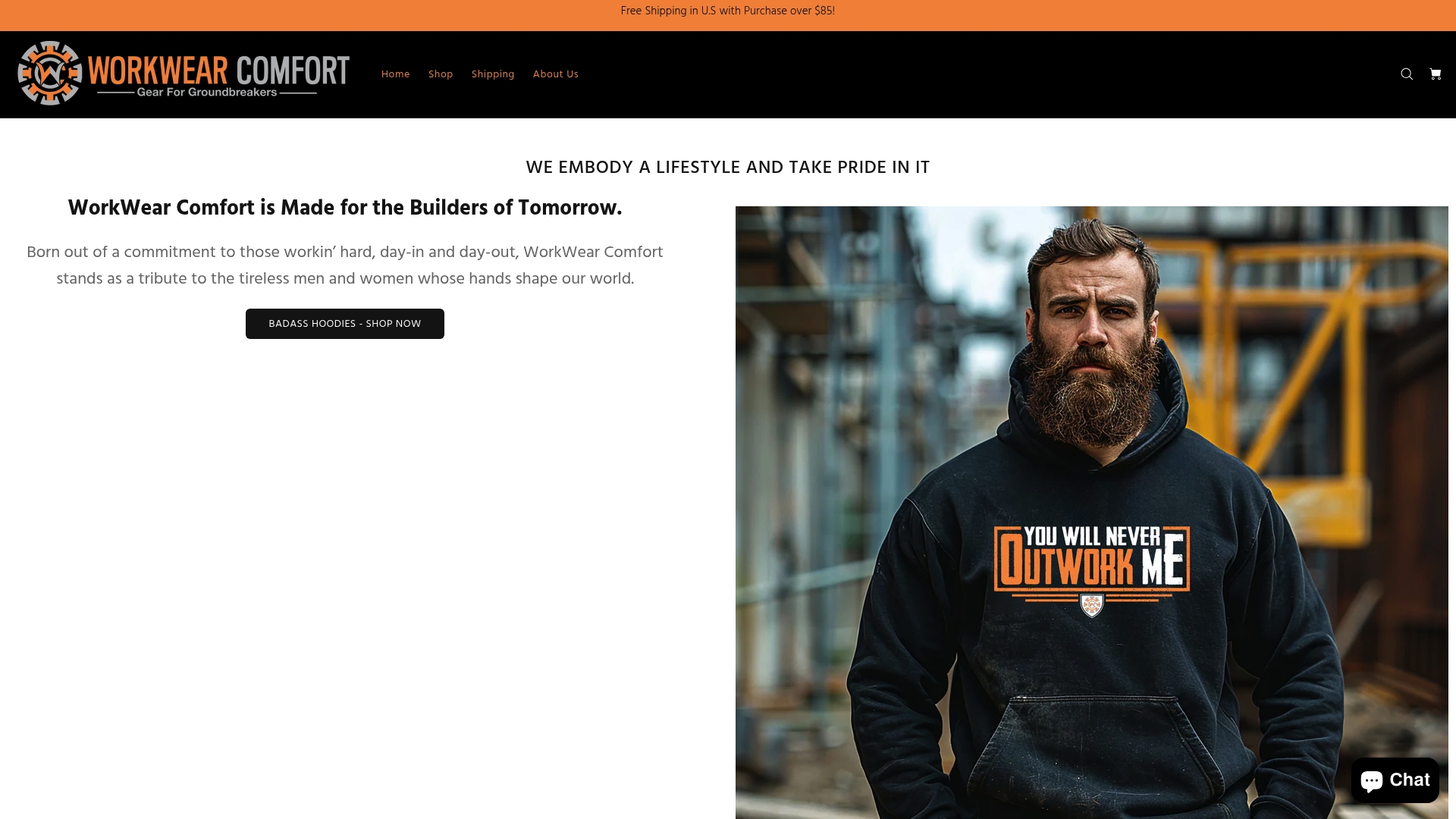
Female welders are doing more than just joining metal and they are reshaping old ideas about who belongs in the trades. According to the Bureau of Labor Statistics, women now make up about 5 percent of all welding professionals, and that number keeps climbing. Some people still think of welding as a man’s world but the truth is different. Female welders are stepping in with new skills and fresh ideas, and that’s changing the entire industry.
Table of Contents
- The Role of Female Welders In The Industry
- Key Skills And Techniques Used By Female Welders
- Challenges Faced By Female Welders And How They Overcome Them
- The Importance Of Diversity In Welding Professions
- Future Trends And Opportunities For Female Welders
Quick Summary
| Takeaway | Explanation |
|---|---|
| Female welders enhance industry diversity | Increasing female participation broadens perspectives, driving innovation in welding sectors. |
| Technical training supports women’s entry | Expanding training programs empower women to excel in welding, promoting workforce inclusivity. |
| Women face unique workplace challenges | Cultural barriers persist, requiring female welders to navigate discrimination and limited advancement opportunities. |
| Diversity improves problem-solving capabilities | A diverse workforce fosters better solutions and adaptability to industry challenges. |
| Welding job openings present opportunities | Projected job openings provide women a chance to enter high-demand sectors, maximizing their impact. |
The Role of Female Welders in the Industry
Female welders are transforming industrial landscapes, challenging traditional gender stereotypes and bringing exceptional skills to metalworking professions. Their contributions extend far beyond filling workforce gaps - they are redefining technical expertise and precision in trades historically dominated by men.
Breaking Barriers in Metalworking
Women are making significant strides in welding, representing a growing segment of skilled trade professionals. According to Bureau of Labor Statistics, women currently comprise approximately 5% of welding professionals, a number steadily increasing as educational opportunities and workplace attitudes evolve.
Technical Expertise and Unique Perspectives
Female welders bring distinctive strengths to industrial settings. Their approach often emphasizes:
- Meticulous attention to detail
- Advanced problem solving skills
- Exceptional precision in complex welding techniques
- Strong communication and collaborative abilities
These qualities translate into superior workmanship and innovative solutions across manufacturing, construction, and aerospace industries. Women in Trades are proving that technical prowess knows no gender.

Expanding Professional Opportunities
As industries recognize the valuable contributions of female welders, career pathways are expanding. Technical training programs, apprenticeships, and specialized certifications are increasingly designed to support and encourage women entering welding professions. This shift not only provides economic opportunities but also challenges long standing workplace cultural norms, creating more inclusive and dynamic work environments.
Key Skills and Techniques Used by Female Welders
Welding demands precision, technical mastery, and specialized knowledge that female professionals are increasingly demonstrating with exceptional skill. These professionals leverage advanced techniques and technological understanding to excel in complex metalworking environments.
Advanced Welding Technique Mastery
Female welders excel across multiple welding methods, showcasing remarkable technical versatility. The primary welding techniques they master include:
- MIG (Metal Inert Gas) welding for automotive and manufacturing applications
- TIG (Tungsten Inert Gas) welding requiring intricate precision
- Stick welding for heavy industrial and construction projects
- Flux-cored arc welding for robust structural work
Their ability to seamlessly transition between techniques demonstrates technical adaptability and comprehensive professional training.
Technical Skills and Safety Expertise
Beyond welding techniques, female welders develop comprehensive technical competencies. According to American Welding Society, successful welders require a sophisticated skill set that combines physical technique with technological understanding. Key technical skills include:
- Advanced blueprint reading and interpretation
- Precise measurement and alignment capabilities
- Understanding metallurgical properties
- Computer aided design and digital fabrication knowledge
To illustrate the variety of key skills possessed by female welders, the following table summarizes technical and interpersonal abilities highlighted in the article.
| Skill Area | Description |
|---|---|
| Attention to Detail | Meticulous approach leading to superior workmanship |
| Problem-Solving Skills | Advanced capability to resolve complex technical challenges |
| Technical Versatility | Mastery of MIG, TIG, stick, and flux-cored welding techniques |
| Communication & Collaboration | Strong teamwork and effective workplace communication |
| Blueprint Reading | Sophisticated interpretation of technical drawings and plans |
| Technological Adaptability | Use of robotics, digital fabrication, and automated welding systems |
| Safety & Ergonomics | Customization of protective equipment and advocacy for inclusive design |
Technological Innovation and Specialized Training
Modern female welders are not just workers but technological innovators. Women in Trades are increasingly leveraging advanced training programs that incorporate robotics, automated welding systems, and cutting edge manufacturing technologies.
This technological proficiency allows them to bring sophisticated problem solving skills and innovative approaches to traditional metalworking challenges, positioning them as critical contributors to industrial advancement.
Challenges Faced by Female Welders and How They Overcome Them
Female welders navigate a complex professional landscape marked by persistent challenges, demonstrating remarkable resilience and strategic problem solving. Their journey involves confronting systemic barriers while simultaneously proving their exceptional technical capabilities.
Workplace Cultural Barriers
Traditional manufacturing and construction environments have historically been male dominated spaces with deeply ingrained cultural dynamics. Female welders often encounter subtle and overt forms of discrimination, including:
- Persistent gender stereotyping
- Limited professional advancement opportunities
- Workplace communication challenges
- Unequal performance expectations
These challenges require extraordinary emotional intelligence and professional strategy to navigate successfully.
The table below compares key challenges faced by female welders and strategies used to overcome them, as discussed in the article.
| Challenge | Description | Overcoming Strategies |
|---|---|---|
| Gender Stereotyping | Bias and assumptions about gender roles in trades | Professional excellence, emotional intelligence |
| Limited Advancement Opportunities | Fewer promotion or leadership roles available | Mentorship, targeted training, networking |
| Equipment Fit & Safety | Protective gear not designed for female welders | Custom PPE, advocacy for inclusive workplace design |
| Communication Barriers | Difficult workplace dynamics and teamwork challenges | Strong communication, peer support networks |
| Performance Expectations | Unequal standards or scrutiny in job performance | Skill demonstration, building supportive communities |
Physical and Safety Considerations
Welding presents unique physical demands that traditionally male equipment and safety protocols have not always accommodated. According to International Journal of Environmental Research and Public Health, female welders develop innovative strategies to address ergonomic and safety challenges:
- Customizing personal protective equipment for better fit
- Developing alternative lifting and manipulation techniques
- Creating peer support networks for mutual guidance
- Advocating for inclusive workplace design
Professional Development and Empowerment
Overcoming workplace challenges requires proactive professional development. Women in Trades are increasingly leveraging mentorship, specialized training programs, and professional networks to build resilience. By cultivating technical excellence, forming supportive communities, and consistently demonstrating superior skills, female welders are systematically dismantling outdated workplace barriers and creating more inclusive industrial environments.
The Importance of Diversity in Welding Professions
Diversity in welding professions represents more than a social imperative - it is a critical strategic advantage for industrial innovation and workforce sustainability. By integrating varied perspectives, experiences, and skills, the welding industry can address complex challenges and drive technological advancement.
Economic and Innovative Impact
Increasing gender diversity in welding directly correlates with enhanced workplace performance and technological creativity. According to Fortis College, historical precedents demonstrate women’s remarkable contributions to industrial manufacturing, particularly during World War II when female welders played pivotal roles in constructing critical military infrastructure.
Key economic benefits of workforce diversity include:
- Enhanced problem solving capabilities
- Broader talent pool recruitment
- Improved workplace adaptability
- Increased organizational innovation potential
Breaking Workforce Shortage Barriers
The welding industry confronts significant workforce challenges. With projections indicating a potential shortage of 400,000 skilled workers by 2024, diversifying recruitment becomes not just beneficial but essential. Women in Trades represent an untapped reservoir of talent capable of addressing these critical workforce gaps.
Cultural Transformation and Professional Development
Diversity in welding extends beyond numerical representation. It encompasses creating inclusive environments that value different perspectives, communication styles, and problem solving approaches. By dismantling systemic barriers and promoting equitable professional development opportunities, the industry can cultivate a more dynamic, resilient, and innovative workforce prepared to meet complex technological challenges of the future.
Future Trends and Opportunities for Female Welders
The welding profession stands on the cusp of significant transformation, with technological advancements and changing workplace dynamics creating unprecedented opportunities for female professionals. Emerging trends are redefining how welders work, learn, and advance their careers.
Technological Innovation and Skills Evolution
Modern welding is increasingly sophisticated, integrating cutting edge technologies that create more inclusive and accessible work environments. According to American Welding Society, emerging technological trends include:
- Augmented reality training platforms
- Advanced robotic welding systems
- Computer assisted design integration
- Virtual reality skill simulation technologies
These innovations are particularly attractive to female welders, offering more flexible and intellectually engaging professional pathways.
Specialized Training and Career Development
Training programs are evolving to provide more comprehensive and supportive learning experiences. Women in Trades highlight the critical role of targeted educational initiatives that address both technical skills and professional networking.
Emerging Industry Sectors
Female welders are expanding into previously male dominated sectors, including aerospace, renewable energy, and advanced manufacturing. The projection of 400,000 welding job openings by 2024 represents a significant opportunity for women to enter and excel in these dynamic professional environments. By combining technical expertise with innovative problem solving skills, female welders are positioned to become essential contributors to technological advancement and industrial innovation.

Get The Gear That Matches Your Skills and Strength
Female welders are pushing boundaries and proving their expertise in fields that demand both precision and resilience. But even the most advanced training and technical skills are challenged by workplace environments that do not provide workwear designed for women. The article highlights how lack of properly fitted apparel and protection slows down progress and undermines confidence for female welders striving to shatter stereotypes and deliver flawless results.
Explore our Badass Women’s Clothing collection and discover workwear made for strong women who take on demanding trades. Each piece is designed with input from real tradeswomen, ensuring you are protected and ready for anything.

Why settle for standard gear when you can have comfort, durability, and a look that speaks to your hard-earned place in the shop or on the site? Shop now at WorkWear Comfort or browse our UPF 50+ Sun Protection Hoodie for sun-safe toughness. Equip yourself today and take the next step as a leader in your industry.
Frequently Asked Questions
What skills do female welders typically possess?
Female welders possess a range of skills, including meticulous attention to detail, advanced problem-solving abilities, and expertise in various welding techniques such as MIG, TIG, stick welding, and flux-cored arc welding. They also excel in communication and collaboration within industrial settings.
How are female welders contributing to the welding industry?
Female welders are challenging gender stereotypes and redefining the image of welding. Their contributions include enhancing workplace diversity, improving workmanship through unique perspectives, and addressing critical workforce shortages in the welding sector.
What challenges do female welders face in the industry?
Female welders face various challenges, including gender discrimination, limited advancement opportunities, and the need for ergonomic adjustments in safety gear. They navigate these obstacles through resilience, mentorship, and building supportive networks.
How can the welding industry benefit from increased diversity?
Increased diversity in the welding industry leads to improved problem-solving capabilities, a broader talent pool, and enhanced innovation. This diversity helps address workforce shortages and fosters a more dynamic, inclusive work environment.


